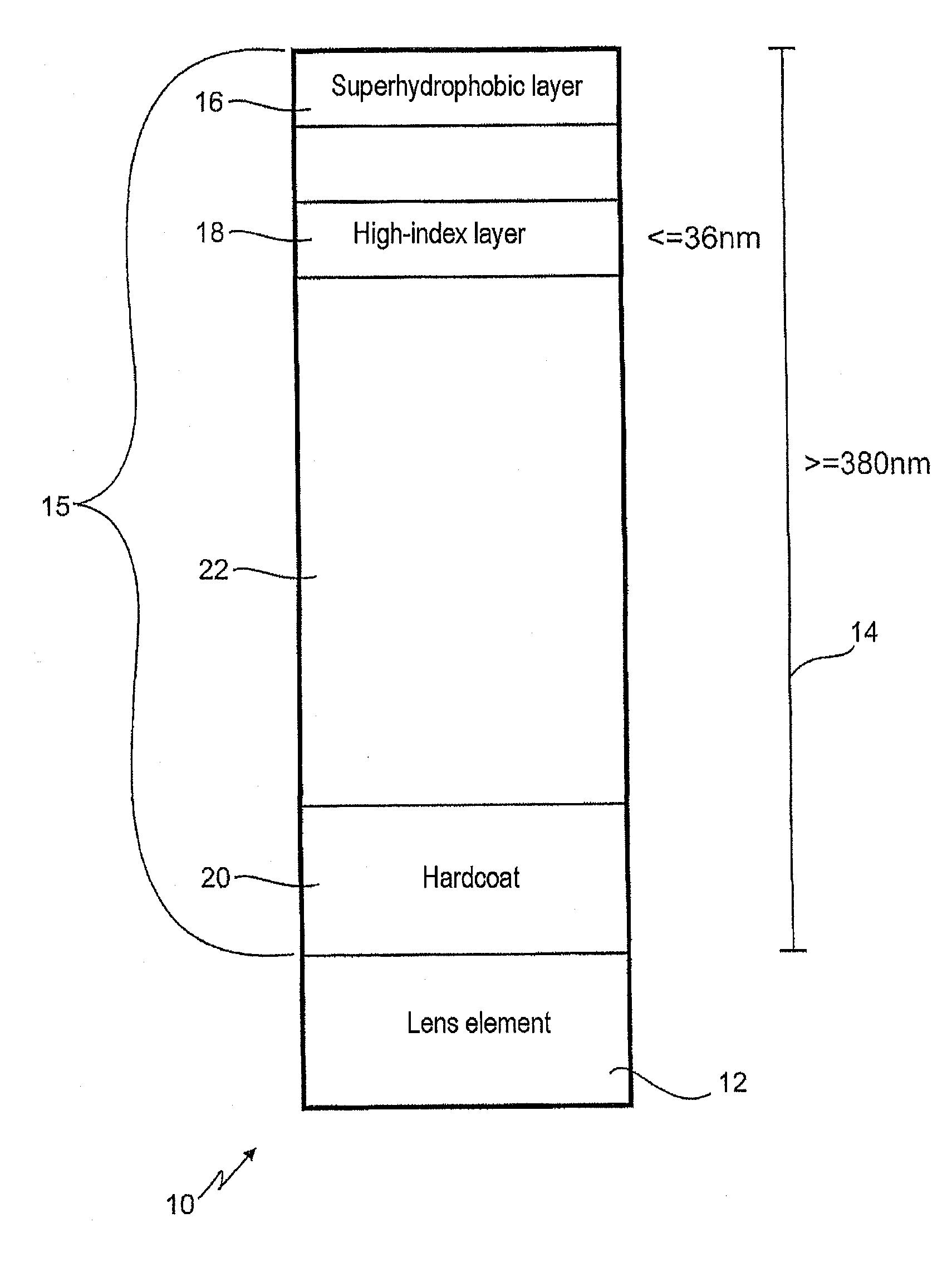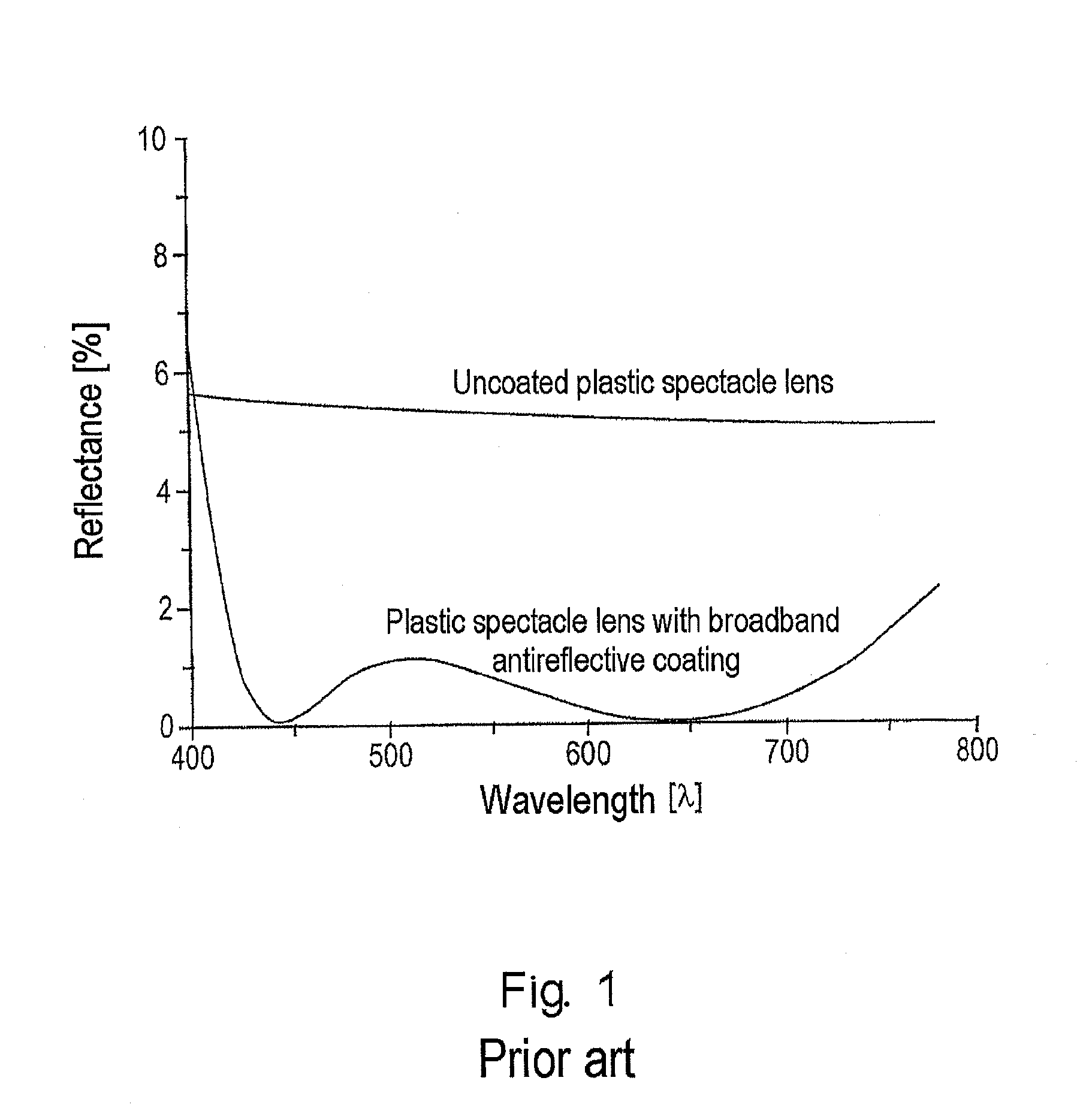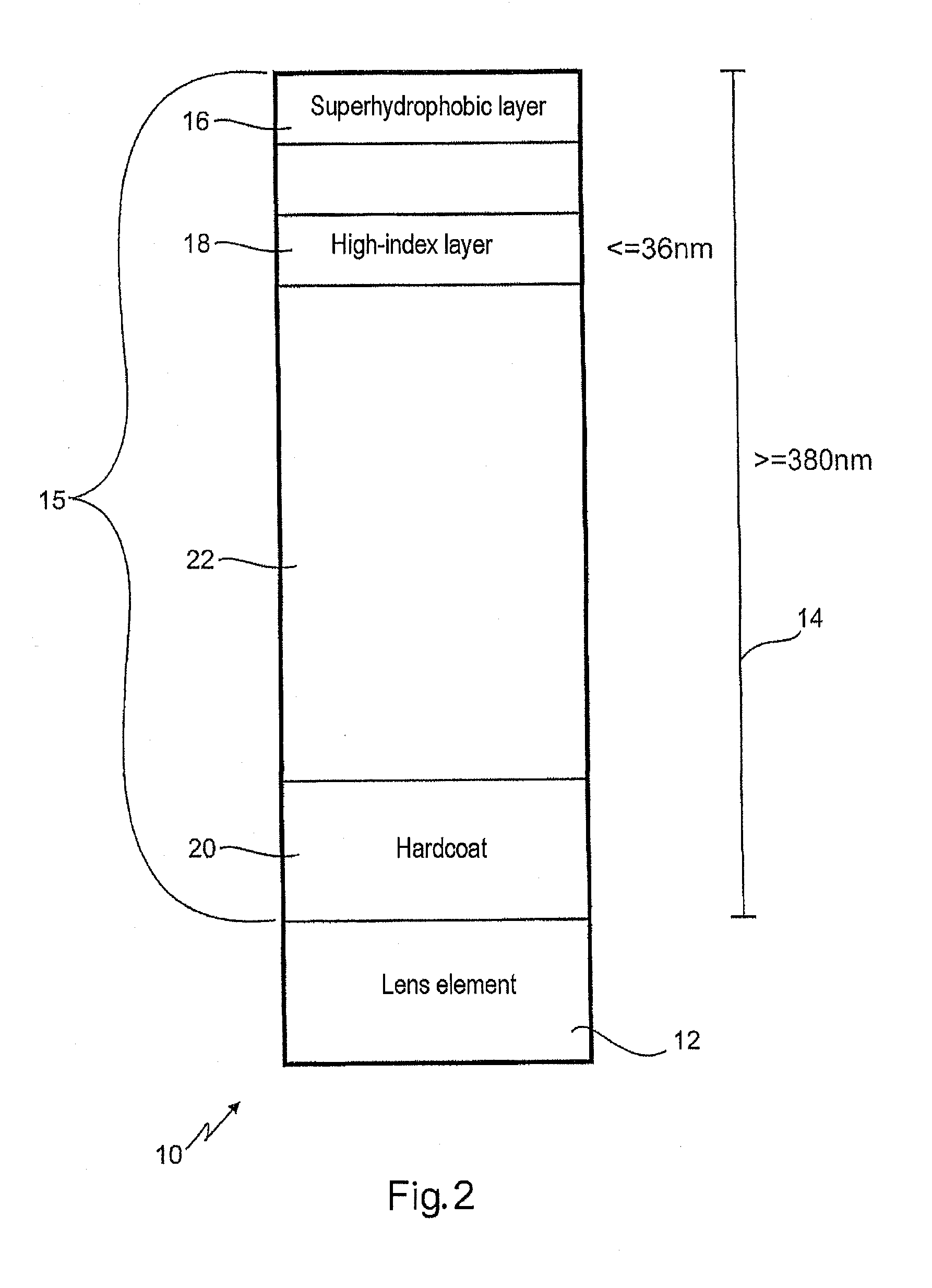Optical lens with scratch-resistant Anti-reflective layer
a technology of anti-reflective layer and optical lens, which is applied in the field of optical lenses, can solve the problems of hazy layers which scatter light, damage by scratching, and a much greater susceptibility of the surface to mechanical exposure, and achieve the effects of improving the beading of water, reducing the susceptibility of the surface to mechanical exposure, and reducing the surface surface area
- Summary
- Abstract
- Description
- Claims
- Application Information
AI Technical Summary
Benefits of technology
Problems solved by technology
Method used
Image
Examples
first embodiment
[0055]FIG. 3 shows an optical lens 10 according to the invention.
[0056]In this embodiment, precisely one high-refractive-index layer 18 is formed in the coating14, having been produced by vapour deposition of titanium oxide (TiO2). Provided within the coating 14, furthermore, are further low-refractive-index layers 24 which are made of quartz (SiO2), and medium-refractive-index layers 26 which are made of aluminium oxide (Al2O3).
[0057]Formed on the lens element 12, first of all, is the hardcoat layer 20, with a thickness of 1 to 10 μm. Disposed on the hardcoat layer is, first of all, a layer 26′ of aluminium oxide, with a thickness of 25 nm. Arranged on this layer, in turn, is a layer 24′ of quartz, with a thickness likewise of 25 nm. Arranged on this layer is a second layer 26″ of aluminium oxide, with a thickness of 50 nm, on which, in turn, a second layer 24″ of quartz is arranged, with a thickness of 60 nm. This layer is then followed by a third layer 26′″ of aluminium oxide, wi...
second embodiment
[0061]In the shown second embodiment of the optical lens 10, a hardcoat layer 20 is applied first of all to the lens element 12, with a thickness of 1 to 10 μm. Located on this layer 20 is a layer 26′ of aluminium oxide, with a thickness of 57 nm. Applied to that layer in turn is a layer 24′ of quartz, with a thickness of 25 nm. Located thereon is a second layer 26″ of aluminium oxide, with a thickness of 44 nm, to which in turn a second layer 24″ of quartz is applied, with a thickness of 61 nm. Located on this layer is a third layer 26′″ of aluminium oxide, with a thickness of 60 nm. Applied to that layer, then, is the first high-refractive-index layer 18′ of titanium oxide, with a thickness of 8.5 nm. Located on this layer, in turn, is a layer 26″″ of aluminium oxide, with a thickness of 45 nm, to which then, in turn, the second high-refractive-index layer 18″ of titanium oxide is applied, with a thickness of 22 nm. Applied to that layer is a third layer 24′″ of quartz, with a thi...
PUM
| Property | Measurement | Unit |
|---|---|---|
| thickness | aaaaa | aaaaa |
| thickness | aaaaa | aaaaa |
| contact angle | aaaaa | aaaaa |
Abstract
Description
Claims
Application Information
 Login to View More
Login to View More - R&D
- Intellectual Property
- Life Sciences
- Materials
- Tech Scout
- Unparalleled Data Quality
- Higher Quality Content
- 60% Fewer Hallucinations
Browse by: Latest US Patents, China's latest patents, Technical Efficacy Thesaurus, Application Domain, Technology Topic, Popular Technical Reports.
© 2025 PatSnap. All rights reserved.Legal|Privacy policy|Modern Slavery Act Transparency Statement|Sitemap|About US| Contact US: help@patsnap.com



